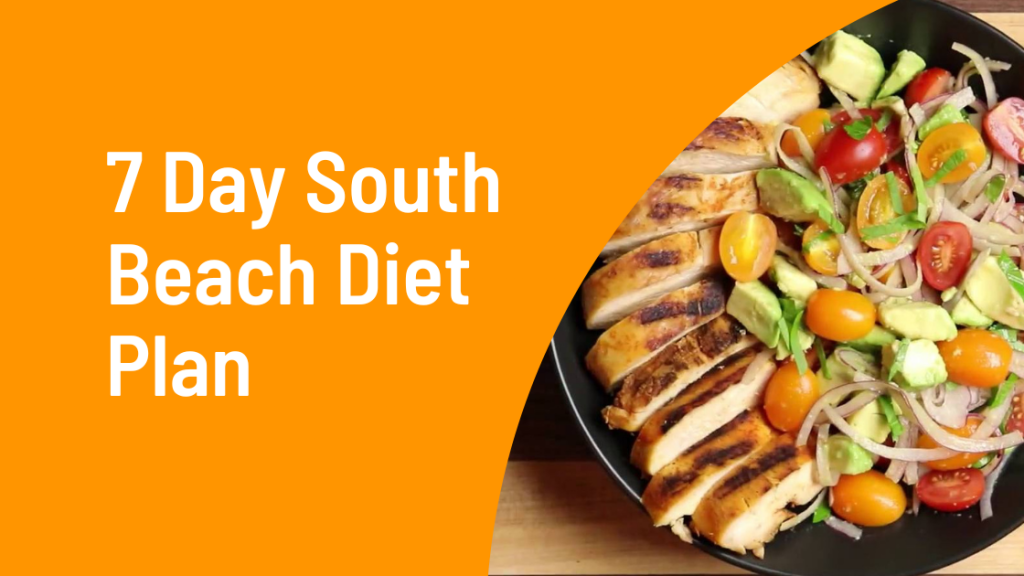South Beach Diet: What Is It? This popular diet plan focuses on a low-glycemic approach, emphasizing healthy fats and lean proteins while restricting certain carbohydrates. Unlike many restrictive diets, the South Beach Diet is divided into phases, gradually introducing more food choices as you progress. This phased approach aims for sustainable weight loss and improved overall health, making it a potentially appealing option for those seeking a balanced and manageable diet.
The diet’s core principles revolve around controlling blood sugar levels to minimize cravings and promote satiety. The initial phase restricts many simple carbohydrates and processed foods, focusing instead on nutrient-rich options. Subsequent phases gradually reintroduce some carbohydrates, allowing for greater dietary flexibility while maintaining healthy eating habits. This structured approach differentiates the South Beach Diet from others, potentially offering a more sustainable long-term strategy.
Sustainability and Long-Term Adherence
The South Beach Diet, while effective for initial weight loss, requires a strategic approach to ensure lasting results. Successfully transitioning from the initial phases to a sustainable lifestyle hinges on understanding the underlying principles and integrating them into your daily routine. Long-term adherence is not about strict adherence to a rigid plan, but rather a mindful shift in eating habits and lifestyle choices.
The key to maintaining weight loss achieved through the South Beach Diet lies in gradually incorporating more variety while retaining the diet’s core principles. This involves a gradual reintroduction of certain foods, careful portion control, and a commitment to regular physical activity. Simply reverting to old habits after reaching your weight goal will almost certainly lead to weight regain.
Strategies for Long-Term Weight Management
Maintaining a healthy weight after completing the South Beach Diet requires a holistic approach. It’s not about dieting, but about creating a sustainable lifestyle change. This involves conscious food choices, regular exercise, and mindful eating habits.
This transition should be gradual, avoiding sudden shifts that can lead to frustration and relapse. For instance, instead of immediately reintroducing all previously restricted foods, consider gradually adding small portions of healthy carbohydrates and fats, carefully monitoring your weight and adjusting your intake accordingly.
Incorporating South Beach Principles into a Sustainable Lifestyle
The South Beach Diet’s emphasis on lean protein, healthy fats, and non-starchy vegetables forms a solid foundation for a long-term healthy eating plan. This approach naturally limits processed foods, sugary drinks, and refined carbohydrates – all major contributors to weight gain. Maintaining this focus is crucial for sustained weight management.
For example, continue prioritizing meals rich in lean protein such as fish, chicken breast, and beans. Include a variety of colorful vegetables in every meal to ensure adequate fiber intake and micronutrients. Healthy fats from sources like avocados, nuts, and olive oil should also remain a staple in your diet.
Preventing Weight Regain
Weight regain after completing a diet is common, often stemming from a return to old eating habits. Preventing this requires ongoing vigilance and a commitment to the healthy lifestyle changes adopted during the diet. Regular monitoring of weight and body composition helps identify potential issues early.
Consider keeping a food journal to track your intake and identify any potential triggers for overeating. Regular physical activity, beyond the initial weight loss phase, remains crucial for maintaining a healthy weight and overall well-being. This could include anything from brisk walking to more intense workouts, tailored to your fitness level and preferences. Finally, seeking support from friends, family, or a support group can provide encouragement and accountability during this transition.
Visual Representation of the Diet
The South Beach Diet, while emphasizing healthy eating, isn’t visually monotonous. A typical meal plan incorporates a vibrant array of colors and textures, reflecting the diversity of permitted foods. Understanding this visual aspect helps maintain motivation and provides a tangible representation of the diet’s principles.
The visual appeal of South Beach Diet meals stems from its emphasis on lean proteins, whole grains, and plenty of fruits and vegetables. Think grilled salmon with a side of asparagus and quinoa, or a colorful salad with grilled chicken breast and a light vinaigrette. These meals are not only nutritionally balanced but also aesthetically pleasing, making the dietary experience more enjoyable.
South Beach Diet Food Pyramid
The traditional food pyramid is adapted to better reflect the South Beach Diet’s prioritization of certain food groups. Instead of a simple pyramid, a more dynamic visual representation might be more appropriate. Imagine a tiered structure where the base, the largest section, represents the foundation of the diet: lean proteins (fish, poultry, beans). The next tier, slightly smaller, would consist of non-starchy vegetables (broccoli, spinach, peppers). The third tier would include healthy fats (olive oil, avocados, nuts). The smallest section at the top would represent limited portions of whole grains (brown rice, quinoa, whole-wheat bread). This structure visually demonstrates the relative proportions of each food group recommended by the diet, making it easy to understand at a glance. Sugary drinks and processed foods would be completely absent from this pyramid. The visual cues of size and layering emphasize the importance of lean protein and non-starchy vegetables while minimizing less healthy options.
Concluding Remarks
The South Beach Diet, with its phased approach and focus on balanced nutrition, offers a potentially effective pathway to weight management and improved health. While it emphasizes a structured approach in the initial phases, the ultimate goal is to establish sustainable eating habits that extend beyond the diet itself. By understanding the core principles, allowed foods, and potential challenges, individuals can make informed decisions about whether this diet aligns with their personal health goals and lifestyle.



